Protective Gear
Always consider safety first. Wear safety glasses to protect your eyes from flying wood chips and dust. Hearing protection, such as earplugs or earmuffs, is essential when using loud tools to prevent permanent hearing loss.
Dust masks are crucial for keeping harmful wood dust and particulates out of your lungs. Even small projects can create a significant amount of dust, so be prepared.
Gloves protect your hands from splinters and cuts, but be mindful of where your hands are when operating tools, as gloves can get caught in machinery.
Equip yourself with safety glasses, hearing protection, dust masks, and gloves before heading to your workshop. Prioritizing safety leads to more productive and enjoyable woodworking sessions.
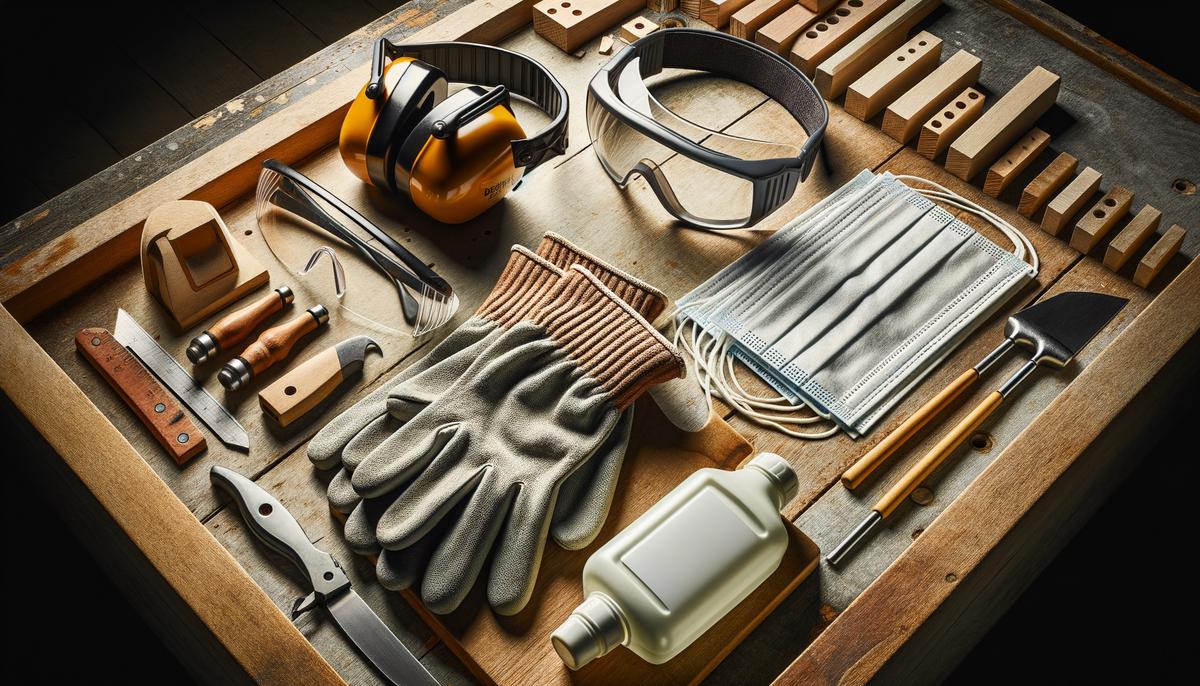
Tools and Equipment
Well-maintained tools are safer and more efficient. Keep blades and bits sharp to ensure smooth, precise cuts and to prevent them from skipping or catching, which can lead to frustration or injury.
Regularly check power tools for signs of wear and tear, such as:
- Frayed cords
- Loose screws
- Dull components
Taking a few minutes for maintenance can save you from potential mishaps and keeps your tools running smoothly.
Ensure tools like saws and drills are firmly attached to their stands or work surfaces. A stable workstation reduces the risk of unexpected tool movement and helps keep your fingers safe. Double-check that everything is tightly bolted down and work surfaces are secure.
Sharp blades, regular tool maintenance, and stable workstations are essential for a safe and efficient workshop. By respecting your tools and keeping them in top condition, you'll be rewarded with reliable performance and clean, precise results.
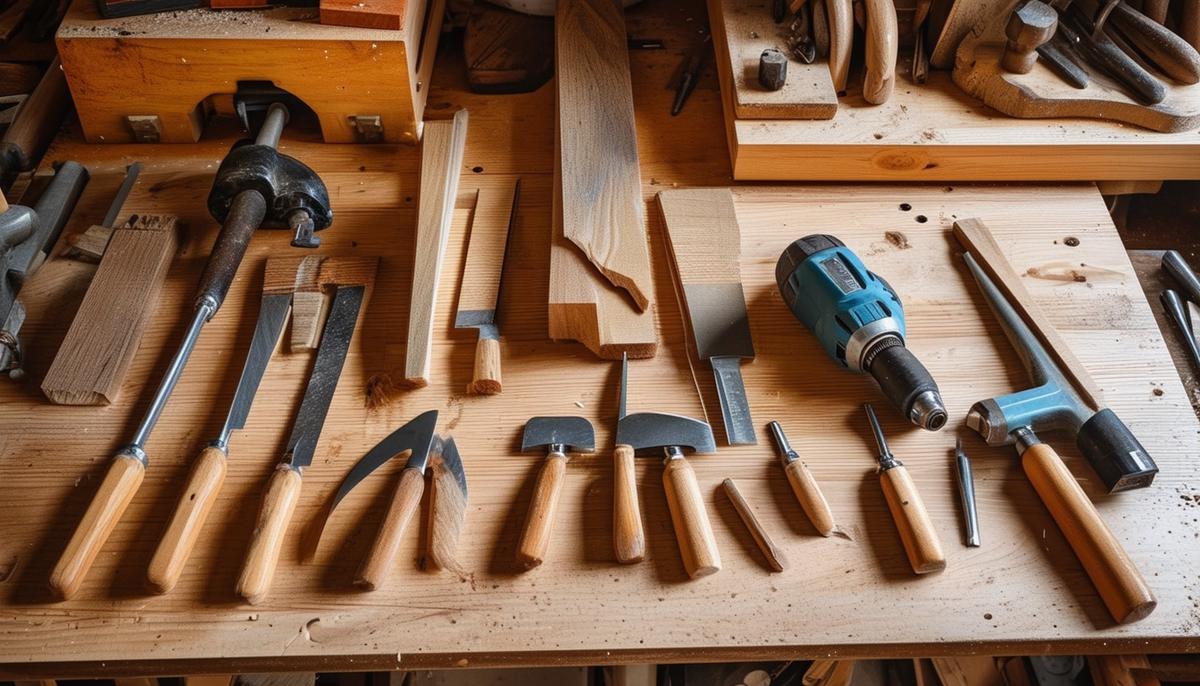
Workspace Safety
A clutter-free workspace is crucial for safer woodworking. Keep the floor free of sawdust, offcuts, and loose debris to prevent tripping or slipping hazards. Make sweeping and tidying a part of your routine, not just an end-of-project task.
Proper ventilation is important to avoid inhaling wood dust and fumes from finishes or adhesives. Use a fan to move air, open a window, or invest in a dust extraction system if your budget allows.
Adequate lighting is essential for seeing every cut, measurement, and potential hazard. Bright, even lighting throughout your workspace, as well as task lighting focused on critical areas, can help prevent accidents and eye strain.
Keep your tools organized and within easy reach to avoid wasting time searching for items and to maintain focus on the task at hand.
Prioritize a clean, well-ventilated, and properly lit workspace to enhance both the safety and quality of your woodworking projects.

Handling Materials
Always inspect your wood before starting a project. Check for hidden nails, screws, or other objects that could damage your tools or cause injury. Remove any unwanted items before proceeding.
Use clamps and vices to stabilize the wood while working. These tools act as an extra set of hands, ensuring accurate and safe cuts and drills. Avoid trying to hold the wood with one hand while operating a power tool with the other.
Practice proper lifting technique when handling heavy pieces of lumber:
- Bend your knees
- Keep your back straight
- Use your leg muscles to lift
Improper lifting can lead to serious back injuries that may sideline you from your projects.
Remember to inspect your materials, use clamps to secure your work, and lift with your legs to maintain a safe and efficient workflow in your workshop.
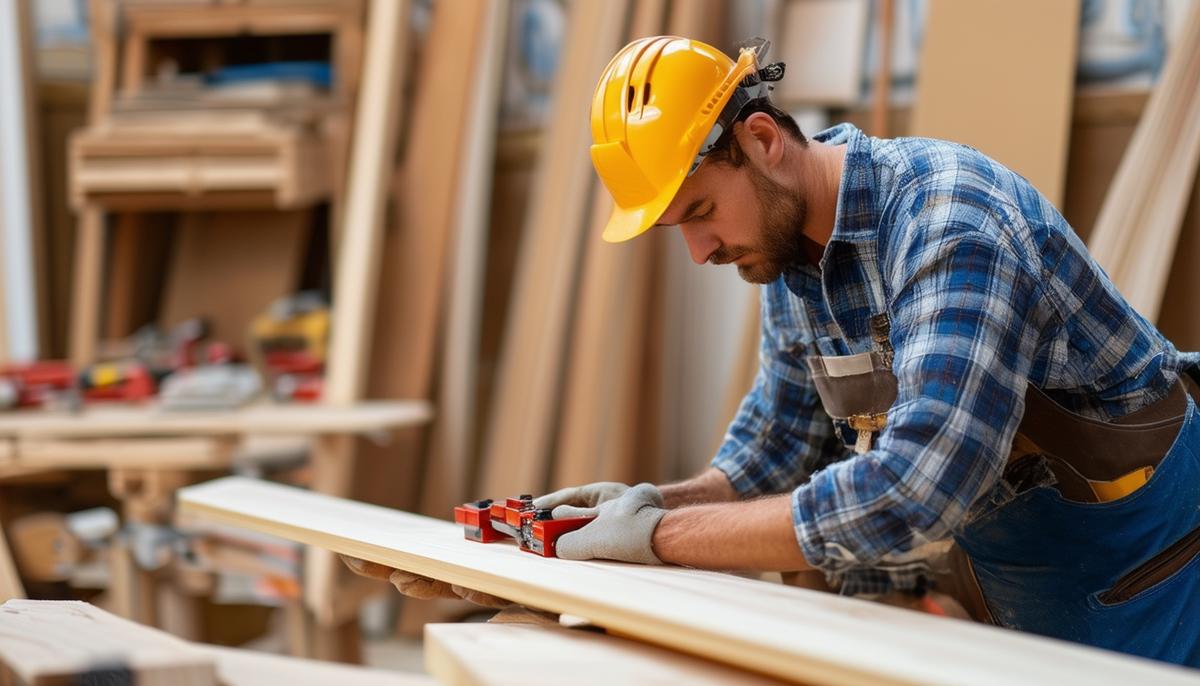
Safe Practices
"Measure twice, cut once" is a popular saying for a reason. Double-checking your measurements can save you from frustration and wasted materials, ensuring you get it right the first time.
Keep your fingers away from blades and cutting areas. Always be aware of where your hands are in relation to the blade, and use push sticks or other aids to maintain a safe distance.
Work at a steady pace rather than rushing through your project. Being methodical reduces the risk of mistakes and accidents. Taking your time may add a few extra hours to your project, but the end result will be worth it.
Stay focused on the task at hand. Set aside distractions, such as your phone, and give your full attention to your work. If you feel tired or your mind starts to wander, take a break to refresh and refocus.
Double-check measurements, keep fingers away from blades, work at a comfortable pace, and maintain focus to ensure successful and safe woodworking projects.

Electrical Safety
Keep your work area dry, as water and electricity create a dangerous combination. If your workspace tends to be damp or humid, use dehumidifiers or consider working in a different area.
Regularly inspect electrical cords for signs of wear and tear. Frayed wires can cause sparks, short circuits, or even fire. Replace damaged cords immediately to keep your equipment running safely and efficiently.
Avoid overloading outlets with multiple devices. Ensure all plugs fit snugly into the outlets, as loose connections can cause flickering and overheating. Replace worn plugs and outlets, and consult a professional if you notice any unusual signs, such as a burnt smell or warmth around the outlet.
Double-check that all equipment is properly connected when working with tools that require an electrical connection. Loose plugs can cause intermittent power, which can be both frustrating and dangerous.
Prioritize electrical safety by keeping your work area dry, inspecting cords regularly, ensuring plugs and outlets are in good condition, and checking for proper connections. These practices protect you and your workshop from potential hazards.
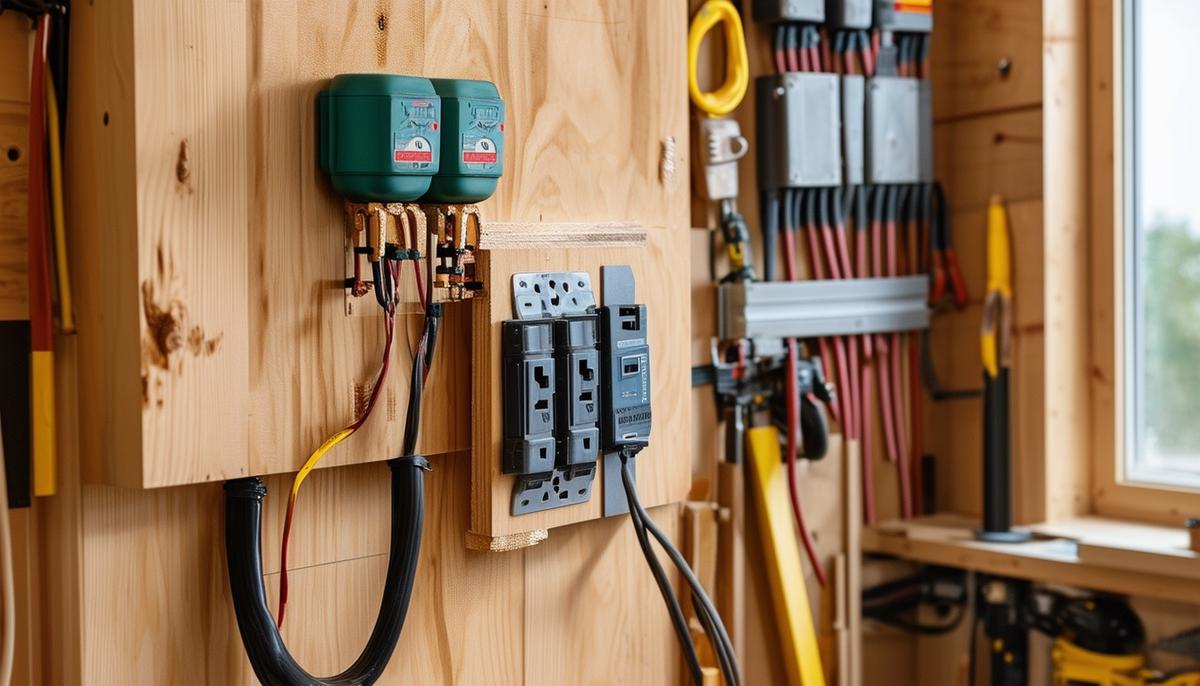
Training and Manuals
Before using a new tool, take the time to read the manufacturer's instructions and familiarize yourself with its operation and limitations. Understanding how to properly use your equipment can help prevent mistakes, reduce wear and tear, and lower the risk of injury.
If you're unsure about how to operate a particular tool, seek advice or training from a professional, such as an experienced carpenter, a local hardware store expert, or a reputable online tutorial. A few minutes of guidance can make a significant difference in your work and may introduce you to new techniques.
Familiarity with your tools is like having a conversation with an old friend—you get to know their quirks, strengths, and weaknesses. This understanding builds trust, allowing you to work more effectively and confidently.
Consider manuals as your toolbox's best-kept secret. They provide valuable information designed to keep you safe and make your work more efficient. Keep them handy in your workspace for easy reference.
Investing time in reading manuals and seeking guidance when needed will lead to safer, more knowledgeable, and ultimately more satisfying woodworking experiences.1
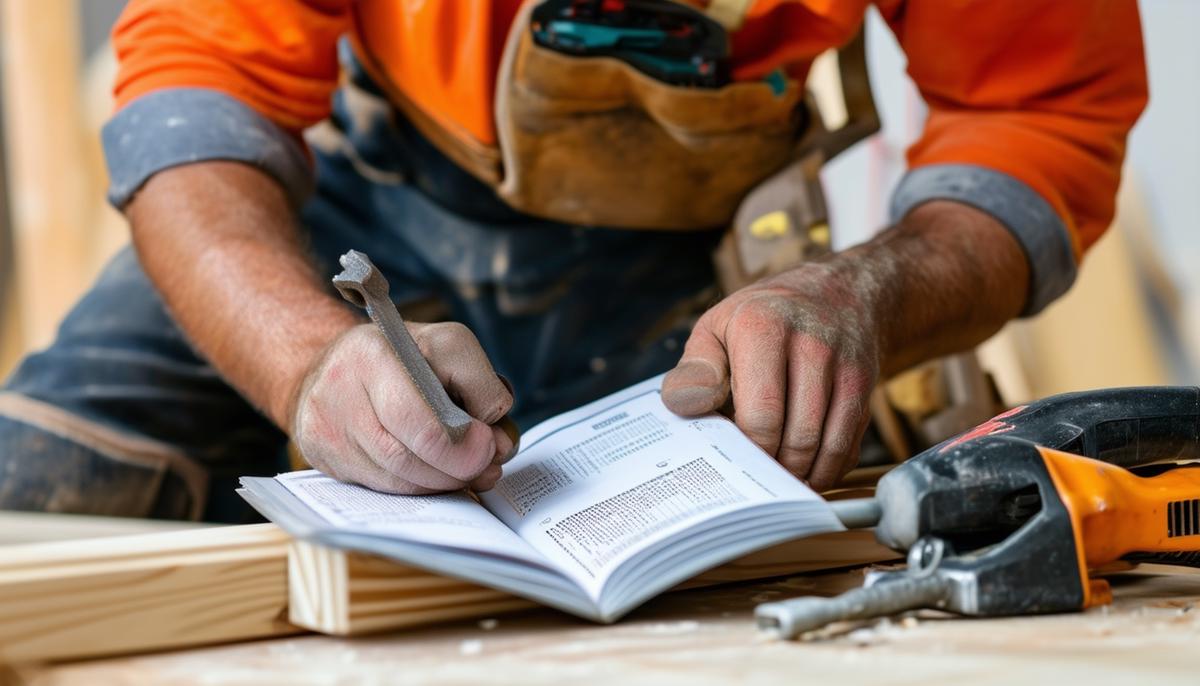
- Hernandez R. Safety in the Woodworking Shop: Insights and Strategies for Injury Prevention. Journal of Occupational Health and Safety. 2018;13(2):145-153.
